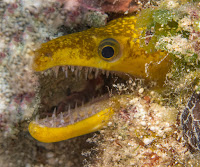When I first started diving in 2004, I was told by my instructor that the first piece of equipment I should buy is a set of Regulators. It is life support equipment and, if I have my own and look after them, I will never need to worry about the quality of rental regs, which, let's face it, can be of dubious condition sometimes!
I listened well and went out to buy myself a brand new shiny set of Apeks ATX 100s. Now, over the last 11 years and a few thousand dives, I have needed to replace the valve body once and a couple of hoses but, as promised, I looked after them and had them serviced regularly and they have served me well. So, why would I even consider changing them?
HALCYON!
As Halcyon Dealers for Cyprus, Scuba Tech have lots of Halcyon Dive Equipment in Store for sale and in the dive school itself. All our instructors and Divemasters use Halcyon wings of one kind or another and even the divers that come diving with us regularly are converting after trying the set up.

However, we had never tried the regulators and decided that, to know what we are talking about when people ask for advice, we should definitely dive these regs and see how they are. So, Peter asked me to try the Single tank set up for my recreational diving while he set about diving the same regulators in Twin tank configuration.
We have the Halcyon H50-d first stage with Halo second stage and the Aura as alternate.
The Halcyon H50-d is a balanced, environmentally sealed first stage, giving better performance for cold water. Although this won't be a factor here in Cyprus, this will be a useful feature when I am back in the UK.
The first thing I noticed about this set up was the weight. They are so light, I needed to add an extra kilo to my pouches to accommodate for them. This will make a nice feature for when we travel.

As a girl that has always liked to work a little bit for the breath, the ease of breathing on these regulators is outstanding. Very little effort is required to open the downstream valve and release the breathing gas. When using my Apeks regulators I have always needed the second stages to be quite tight, requiring a strong suck to release the breath, otherwise it felt like I was getting too much air and always on the edge of free-flow. The Halcyon regulators do not feel like this though, you just get sufficient air with very little breathing resistance, even at depth.
The only downside to this came when teaching PADI Open Water Courses and the free flow regulator skill. I finished the demonstration with a very, very cold mouth!!
The Halo second stage is usually used as the primary demand valve and has an Adjustable Inhalation Control to fine tune air delivery and, while the Apeks do have the adjuster also, I have never really been able to tell much difference between the different settings. The Halo adjuster makes a big difference, to make it suitable for all.

Primarily used as the back up second stage, the Aura doesn't have the Adjustable Inhalation Control but both second stages have an Air Control Vane, which is similar to the Venturi switch on the Apeks. Switch it Halcyon on entry to prevent free flows and switch to dive mode on the dive itself.
In honesty, even when teaching the Open Water skills, I found it very difficult to make either second stage free flow. When teaching the regulator orientation when out of the mouth, I had to resort to the old trick of pushing the purge button to make it free flow, as it just wouldn't do it on its own.
Finally, I think the Comfort Mouthpieces deserve a mention, as these were the biggest surprise to me. I didn't think I would get on with these mouthpieces as they are MASSIVE! It did take a couple attempts and a bit of wiggling to even put it in my mouth the first time but once in, they are extremely comfortable.
With my Apeks long hose configuration, I always felt like the mouthpiece was being dragged out of my mouth when I turned my head in certain directions, to the extent that I had to fit a swivel adaptor to make it more comfortable. I haven't had this problem at all with the Halcyon set up and can only surmise it is a result of the hose routing and mouthpiece itself.
Over the years I have tried a number of different regulators, just to see the differences in breathing etc, but I have always gone back to my Apeks. I didn't think I would ever change them but having used the Halcyon ones over the last month, I think I am converted.
 The reason for his menacing look is actually a result of his small gills. To compensate for this, he must continuously open and close his mouth, maintaining a flow of water which aids respiration but shows off those big sharp teeth!!
The reason for his menacing look is actually a result of his small gills. To compensate for this, he must continuously open and close his mouth, maintaining a flow of water which aids respiration but shows off those big sharp teeth!!





